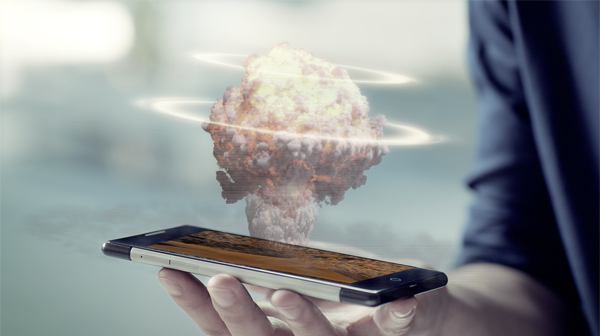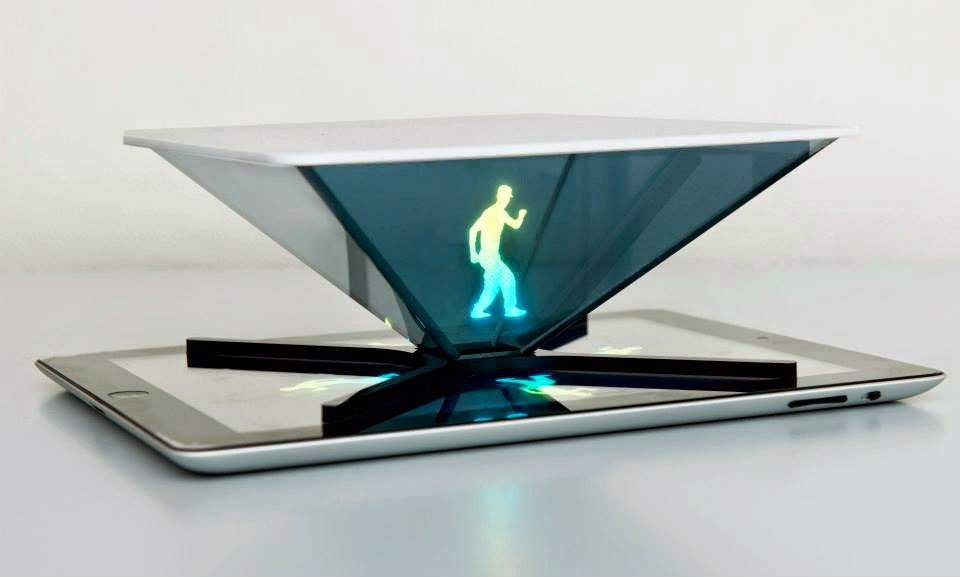HOLOGRAPHIC INTERACTION DISPLAY: NEW REVOLUATION FOR SMARTPHONE
Holographic Display:

All things considered, before going in more short, I would first give you a speedy glimmer of the subject.
At present, you can see a wide assortment of Smartphones giving TOUCH SCREEN highlights, in two classes:
As specified over, this innovation is completely based upon the position of Human Eye; it is as of now not able to give a sequential perspective from various bearings in the meantime. That is, the figment field created is restricted to the eyes of a solitary individual and gives the best encountering just to a SINGLE PERSON. In this way, we'll call it as SMART HOLOGRAPHIC or PERSONAL HOLOGRAPHIC DISPLAY.Let's get more mindful and included. The Holographic showcase can be ordered in further three sorts:
Physical Holography (holographic film, laser holographic printing).
Computerized Holography (anticipated laser holographic imaging).
Processing Holography (eyeball following holographic imaging, situation following holographic imaging).
At present, you can see a wide assortment of Smartphones giving TOUCH SCREEN highlights, in two classes:
As specified over, this innovation is completely based upon the position of Human Eye; it is as of now not able to give a sequential perspective from various bearings in the meantime. That is, the figment field created is restricted to the eyes of a solitary individual and gives the best encountering just to a SINGLE PERSON. In this way, we'll call it as SMART HOLOGRAPHIC or PERSONAL HOLOGRAPHIC DISPLAY.Let's get more mindful and included. The Holographic showcase can be ordered in further three sorts:
Physical Holography (holographic film, laser holographic printing).
Computerized Holography (anticipated laser holographic imaging).
Processing Holography (eyeball following holographic imaging, situation following holographic imaging).

Highlights
- · Make gliding content lines!
- · Quick and simple to utilize.
- · Basic API for engineers.
- · Change pictures into multi dimensional images with a solitary summon.
- · You can make your own activitys!
- · Incorporates the vivified rainbow shading &u!
- · Bolsters any UTF-8 image.
- · Can shows the measure of players online in a BungeeCord server (bolsters RedisBungee)
- Where can Smart Holographic Phone be used?
A holographic display is a type of display that utilizes light diffraction to create a virtual three-dimensional image of an object. Holographic displays are unique from other forms of 3D imaging in that they do not require the aid of any special glasses or external equipment for a viewer to see the image.
Types of Holographic Display]
Laser Plasma
Laser plasma displays, developed in 2005 by the University of Texas, utilize a series of powerful lasers that focus light in desired positions in order to create plasma excitations with the oxygen and nitrogen molecules in the air. This type of holographic display is capable of producing images in thin air, without the need of any sort of screen or external refraction media. The laser plasma display is able to depict very bright and visible objects, but it lacks in terms of resolution and picture quality.
Micromagnetic Piston Display
The piston display, invented by Belgian company IMEC in 2011, utilizes a MEMS (micro-electro-mechanical system) based structure. In this type of display, thousands of microscopic pistons are able to be manipulated up and down to act as pixels, which in turn reflect light with a desired wavelength to represent an image. This developing technology is currently in the prototype phase, as IMEC is still developing the mechanism that will mobilize their "pixels" more effectively. Some of the limitations of this type of this display include the high cost, difficulty of creating large screens, and its susceptibility to mechanical failures due to the relatively large amount of moving parts (microscopic pistons).
Holographic Television Display
The holographic television display was created by MIT researcher Michael Bove in 2013. Dr. Bove used a Microsoft Kinect camera as a relatively effective way to capture subjects in a three-dimensional space. The image is then processed by a PC graphics card and replicated with a series of laser diodes. The produced image is fully 3-dimensional and can be viewed from all 360 degrees to gain spatial perspective. Bove claims that this technology will be widespread by 2023, and that the technology will cost as much as today's ordinary consumer TV's.

Nice Blog Post !
ReplyDelete